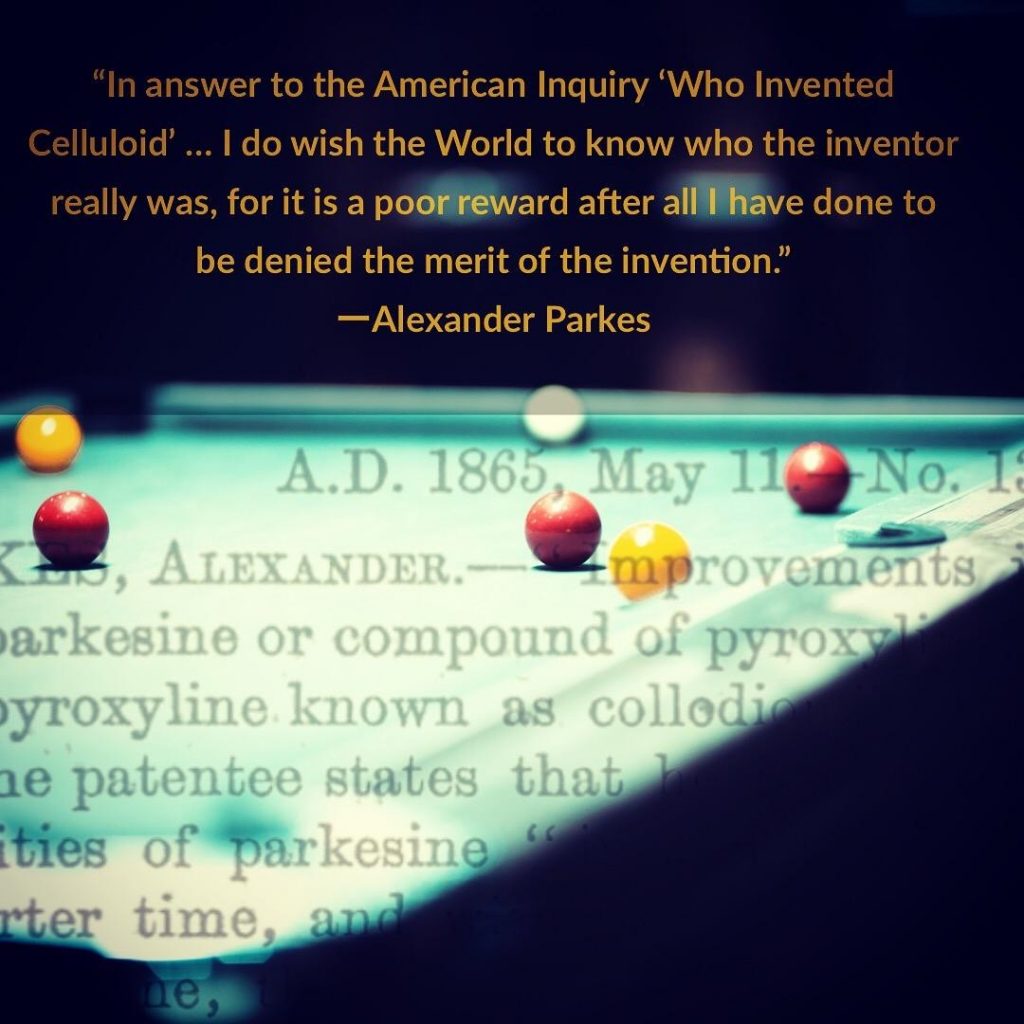The British inventor Alexander Parkes laid the groundwork for the plastics industry in 1856 with his development and patenting of Parkesine, later known as Celluloid. The material combined cellulose from cotton with nitric acid and a plasticizer. It was first widely used as an ivory replacement for billiard balls, then as a film negative for cinema and photography.

His patent was cited in the later dispute between American John Wesley Hyatt (Celluloid) and British George Spill (Xylonite).The court ruled neither of those companies had exclusive rights to the material due to Parkes’ earlier patent, which listed the critical ingredient camphor as a plasticizer.
“In answer to the American Inquiry ‘Who Invented Celluloid’ … I do wish the World to know who the inventor really was, for it is a poor reward after all I have done to be denied the merit of the invention.”
Alexander Parkes
Parkes never succeeded in business but was granted recognition as laying the groundwork for the plastics industry. He held over 60 patents.
